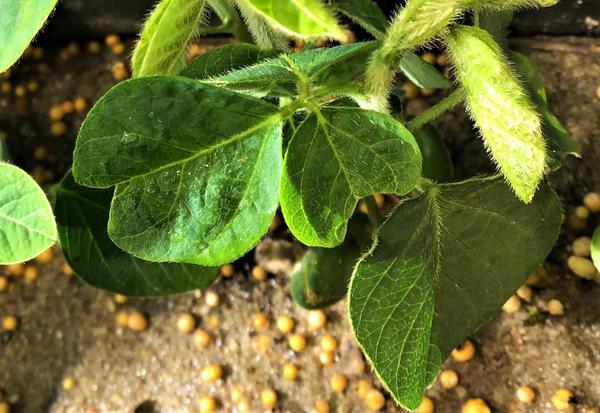Chloroacetamide Injury
- Type
- Physiological
- Leaf Condition
- Distorted, Stunted
- Leaf Location
- Edge, Young
- Field Distribution
- Uniform, Random, Low Areas, Edges
- Prior Environmental
- Rain, Dry, Wind, Pesticide Spray
- Season
- Early Vegetative, Mid To Late Vegetative
- Cropping System
- Soybean Followed By Soybean, Conventional Till, Reduced Till
Symptoms
Very-long-chain fatty acid synthesis (VLCFA)-inhibiting herbicides (herbicide group [HG] 15) cease the production of lipids, resulting in incomplete cell wall formation. Injury symptomology is leaf deformation and draw-stringing where the tip of the leaf is drawn back into the center of the leaf creating a heart-shaped leaflet (Figure 1). The draw-stringing injury can be confused or misidentified as injury from an auxin herbicide. All varieties of soybeans are prone to VLCFA-inhibiting herbicide injury. Draw-string injury can be incurred on established soybean plants if the VLCFA-inhibiting herbicides is applied post residual. Injury is transient and unlikely to cause a yield loss.
This NC State FactSheet can be viewed and printed at https://content.ces.ncsu.edu/vlcfa-inhibiting-herbicide-injury-on-soybean.



